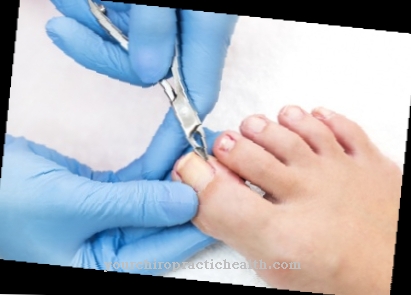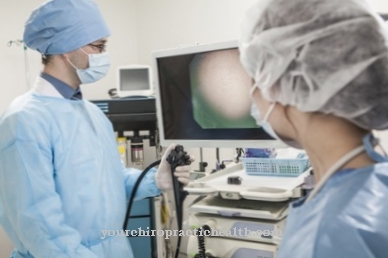Under the term of Hydrotherapy all healing treatments in connection with water are summarized. The healing effect is based either on the specific mineral composition of the water or on the temperature differences during an application. As the elixir of life, water is an extremely versatile remedy.
What is hydrotherapy?

In modern times, Vincenz Prießnitz and Pastor Sebastian Kneipp are considered to be the most famous representatives of hydrotherapy. Countless water therapy applications are known worldwide, the implementation and effect of which are always influenced by the respective culture.
Water therapy is used to strengthen the body's own, unspecific immune defense and to stimulate the circulation. In addition to these two main effects, many other beneficial and health-promoting properties of hydrotherapy are known. Hydrotherapy uses not only water in liquid form, but also in the other two physical states, solid and vapor.
The Romans built astonishingly generous bathing landscapes because even then it was believed that water had a healing effect. The real father of hydrotherapy is the Roman honorary citizen Antonius Musa, who treated the then ruling Emperor Augustus with cold baths as early as 25 BC. This special form of hydrotherapy is also known as balneology and still plays an important role in the use of water for therapeutic purposes. Kneipp supplemented its water healing methods with the addition of medicinal herbs. The term hydrotherapy refers exclusively to the external application of water. The oral intake of water, for example as part of drinking cures, is not referred to as hydrotherapy.
Function, effect & goals
The use of water for therapeutic purposes is extremely diverse. Cold water has a general invigorating and anti-inflammatory effect and promotes blood circulation in the internal organs. Warm and hot water particularly promotes blood flow to the skin and skeletal muscles and has a balancing and relaxing effect. Hydrotherapy has effects on the physique and psyche and can be combined very well with other therapy methods, whereby the therapeutic effect can be increased again.
By improving the blood circulation, the lymph flow is stimulated, and it is also assumed that the body cells are better supplied with oxygen and nutrients. Hydrotherapy can be used for wellness purposes or for therapeutic purposes. In prophylaxis, hydrotherapy, which is gentle on the joints, focuses on preventing and treating diseases of the musculoskeletal system. Aquatraining is enjoying increasing popularity as water aerobics and can be used sensibly as a prescription by the spa doctor or spa doctor to prevent the progression of degenerative joint diseases.
While the so-called Kneipp cure is only part of a wellness offer, the statutory health insurance companies pay the costs for hydrotherapy under certain conditions as part of medically necessary therapy. Several therapy units are always required over a longer period of time in order to achieve the desired effects of relief and healing. Especially in geriatrics and rehabilitation, the therapeutic results of hydrotherapy are absolutely convincing.
Simple water applications can also be carried out on your own at home without any problems. A hydrotherapeutic treatment attempt is particularly promising in the case of circulatory disorders, respiratory problems, states of exhaustion, vascular headaches, circulatory problems and weak immune systems. Many complaints and ailments affecting the entire musculoskeletal system also respond well to hydrotherapy. Particularly convincing and lasting therapy results were achieved for arthritis, arthrosis, and joint and muscle pain.
Today's common, proven and typical forms of application of hydrotherapy are, for example, pressure jet applications, Kneipp water showers, steam saunas, wraps, baths, treading water, brush massages, full body washes and alternating showers. In order to treat the entire organism, it can make sense to integrate hydrotherapy into a superordinate therapy concept. Together with a full diet, relaxation techniques and sports, hydrotherapy encompasses and treats a patient in his whole body-mind-soul unity.
All mentioned forms of hydrotherapy should first be tried out and carried out under the professional guidance of a doctor or medical lifeguard. Only then does it take place on your own, unless the assistance of a second person is required. Especially with cold showers, it must always be started far away from the heart on the extremities before the water jet slowly travels to the middle of the body.
Risks, side effects & dangers
Despite the convincing effects, the few known side effects and the ease with which it can be carried out, hydrotherapy is not unreservedly recommendable for everyone. If in doubt about the presence of certain acute and chronic diseases, the doctor should always be consulted before using water.
For example, anyone who suffers from an acute flu infection, skin inflammation, varicose veins or certain cardiovascular diseases should refrain from any form of hydrotherapy, at least until the symptoms have subsided. Complications requiring treatment are rare in all applications of hydrotherapy. If serious complications occur, they are usually directly related to an overload of the cardiovascular system or breathing.
Patients with liver, kidney, or thyroid disorders should only perform water applications under medical supervision. Today bath additives, essential oils or herbal mixtures are often used in hydrotherapy, which some patients cannot tolerate well and can lead to allergic reactions. Another potential hazard arises from the often tiring and sedating effect of certain forms of water use. These circulatory symptoms can still be present hours to days after hydrotherapy. As a precaution, sensitive people should not operate machines or vehicles after heat hydrotherapy.

























.jpg)

.jpg)
